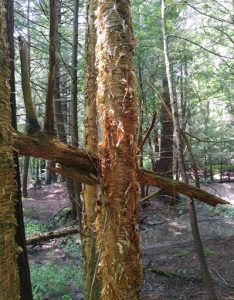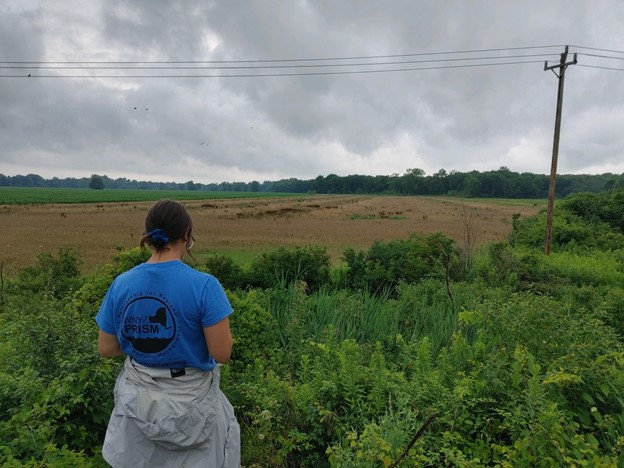By Lyndzie Vail, Invasive Species Management Assistant
Lawton Woods is a 84-acre conservation easement situated on the western border of the Seneca Nation Reservation. The property is comprised of many ecological communities, including: Hemlock-Northern Hardwood Forest, Successional Northern Hardwoods, Peat Swamp, Successional Hardwood Swamp, Shrub Swamp, Shallow Emergent Marsh, Vernal Pool, Intermittent Stream, and Rocky Headwater Stream. The land will be donated to The Nature Sanctuary Society, however the WNY Land Conservancy will continue as owner of the easement. The WNY PRISM Crew was contacted to carry out a survey to determine the distribution and quantity of invasive plant species. This information is then used by organizations and landowners to determine what Best Management Practices can be implemented to eradicate or maintain invasive populations.
Initially, the shape and size of the land is assessed by the Crew to determine how to cover the area. When surveying, it is important that the individual considers local homeowners, landmarks and any other factors that may affect coverage throughout the property. The Crew also acknowledges suggestions made by landowners that prefer to focus on areas of concern. A strong emphasis was placed on surveying the eastern border to assess the potential presence of invasive species. The Crew began the survey on the eastern border to ensure the area of focus was assessed in an adequate manner. Once the border was assessed, the Crew then focused on the northern and southern borders, as well as the central region. For this survey, there is limited data on the western border of the easement due to limited access.

Lyndzie Vail, Invasive Species Management Assistant, entering survey data on the easter border of the conservation easement.
The Crew compared GIS data throughout the survey to establish that there was equal coverage throughout the easement parcel. Overall, they found that the eastern border contained dense infestations of several invasive plant species. Autumn olive (Elaeagnus umbellata), glossy buckthorn (Rhamnus frangula) and phragmites (Phragmites australis) were among the invasives that were discovered. The central region contained dense populations of multiflora rose (rosa multiflora) and privet (ligustrum) species. Lawton Woods is home to many native plants. These populations include ghost pipe (Monotropa uniflora), river birch (Betula nigra) and staghorn sumac (Rhus typhina).

A native ghost pipe flower located near the heart of Lawton Woods.

River birch trees can be seen shedding their bark along the edge of the creek.


